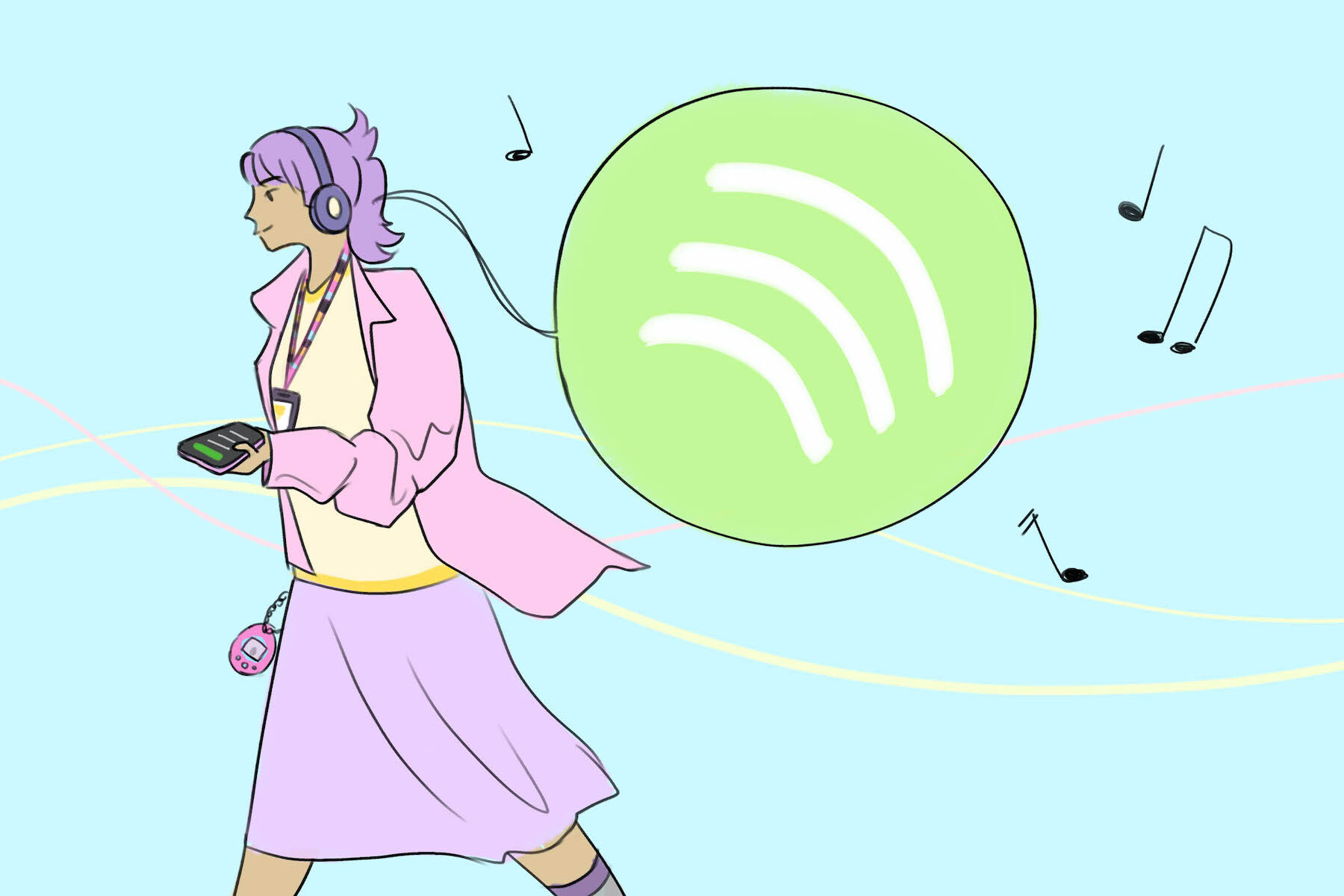One of the most exciting debates hit the pop culture scene with the release of Apple Music in 2015, sparking a bitter rivalry with top music streaming competitor Spotify.
In all seriousness, the question “Spotify or Apple Music?” has been tossed around via social media posts and basement arguments for a comical six years. The common question “Can I get the aux?” frequently prompts the response, “Ewww, you use Apple Music? Get this phone away from me.” However, there are a few people who tend to completely overcomplicate the situation. Some articles are so intense in their dissections of each app that they’re more humorous than anything else. This connects to “stream shunning,” where people decide to hate everyone who uses a different platform. But in a debate where “aesthetic” tends to be the deciding factor, it can be difficult to take things seriously.
Inside the Debate
I’ve been using Spotify for a while now, and I have become thoroughly attached to its sexy green layout. However, I’ve recently felt challenged by Apple Music, Spotify’s competitor, and wanted to feel reassured in my dedication to Spotify. To come to an informed decision, I referenced multiple in-depth reviews of the streaming platforms. They included lots of scholarly information, most of which I didn’t understand. The abundance of data seemed awfully hoity-toity to me, but I felt satisfied knowing I had evidence to back me up. I couldn’t help but refer back to my fondness for Spotify’s color scheme. Also, the new shuffle playlist button looks so cool.
My friend, an Apple Music psycho, began asking me these ridiculous questions about Spotify’s streaming quality. “What? I thought they all sound the same?” I laughed her off — my main focus isn’t sound quality when I have iPhone 8 speakers — and started preaching the beauty of Spotify’s simplistic design. I think she mentioned this term AAC, which stands for advanced audio coding. My ears didn’t really notice the difference, so, like, who cares? I just like green more than white. What’s the harm in that?
Spotify has a sleek and modern look that clicks with me. The smooth feel of its black and green layout is satisfying, and there are no rough edges to its design. The look of the play button was also a huge clincher for me. Comparing this to Apple Music’s bland white overtones, Spotify is the clear winner. I wouldn’t actually be rude to anybody who tells me that Apple Music looks better — that’s just mean. I’d just perpetually question their judgment about colors and design.
After the discussion, I decided to get some other opinions on the debate through a quick Google search. They included more random stuff about sound quality, like “Spotify uses the Ogg Vorbis format or AAC.” What even is that? Should I be incorporating all this research into my decision? Now that I think about it, my ears can definitely tell the difference between 256 and 320 kbps (kilobits per second). That all sounds very important, but I have a hard time not resorting to my simplistic desires for aesthetics.
I found all of this information very inspiring and enlightening. I guessed it was time to develop a brand new understanding of my music streaming platforms. Diving further into the article, I expected to be blown away by diligent research; they even included a video explaining the best decision. Two regular citizens (they didn’t look like they knew what kbps is) explained their separate reasons for using each app. Each had their own personal opinions — subjectivity was very relevant in this debate, it seemed. One girl “likes the way Spotify felt, it just felt right.” To me, that answer struck home a lot more than the size of the song library. Apple Music holds over 75 million while Spotify holds over 70 million. Alas, whatever would I do without those five million extra songs?
Finally, the big question emerged: Which streaming service is more expensive? I was pretty sure that I’d heard that Apple Music breaks the bank. This was my first rebuttal to my friend, the victim of Apple Music. She asked how much I was paying for Spotify — I didn’t know the answer — and then flexed her $10 a month bill for Apple Music. I scoffed at the rebuttal, especially considering that Spotify was definitely nowhere close to that outrageous price. Another quick Google search proved me wrong; it’s actually the same price. Dammit. So far, there aren’t many significant differences between the two platforms. I’m curious as to why there are entire articles dedicated to dissecting this debate. Is it really that deep?
I was now beginning to question this newfound complexity in the debate. I perused through a few more articles, some discussing compatibility, iCloud syncing and Hifi. Never once have I considered these factors in my decision between the two apps. My friend agreed, as well; she used Apple Music because it had a more “minimalistic design.” Sounds pretty darn simple; I wonder if some people actually care about AAC and kbps? I doubt it, considering everyone I’ve talked to rambled about the queuing system for each app. That point wasn’t anywhere to be found in these articles. It seems they’re getting a little carried away.
It’s Really Not That Complicated
Ever since the release of Apple Music in 2015, this frivolous debate has been all the rage on Instagram posts and joking conversations. Thus, when looking inside the debate, it’s almost hilarious to read articles that delve so deep into the research. Who is really primed to choose one app over the other based on unknown terms other than experienced sound engineers? The reasonable assumption is nobody. It bears striking resemblance to the frivolous social media argument concerning PlayStation versus Xbox. Besides price, color and the controller, most of the differences between the two are irrelevant for casual users. People now understand that the debate is a joke and use it as satire.
These debates are nothing new. They’re recycled and satirical jokes that commence when similar products rival each other. Coke versus Pepsi, for example. Imagine deciding Coke is superior because it has 39 grams of sugar. That’s not realistic for the general public. People are far more likely to choose one over the other because their favorite color is red, or, quite simply, because it tastes better. One brand just “feels right.”
It’s hard to imagine a casual listener analyzing such dedicated research to decide on their preferred streaming service. There’s always the exception (the sound engineer), but the general public couldn’t care less about kbps. The overcomplication of these silly debates seems like journalists grasping at straws.
Ironically, this article could be considered an overcomplication in itself. In order to refute that claim, allow me to digress. Apple Music and Spotify are not all that different. They have different colors and playlists, podcasts and queuing systems. If you find yourself on the fence about which app to try, just get the free trial, and see for yourself which tickles your fancy. I’m assuming aesthetics will take priority.
















